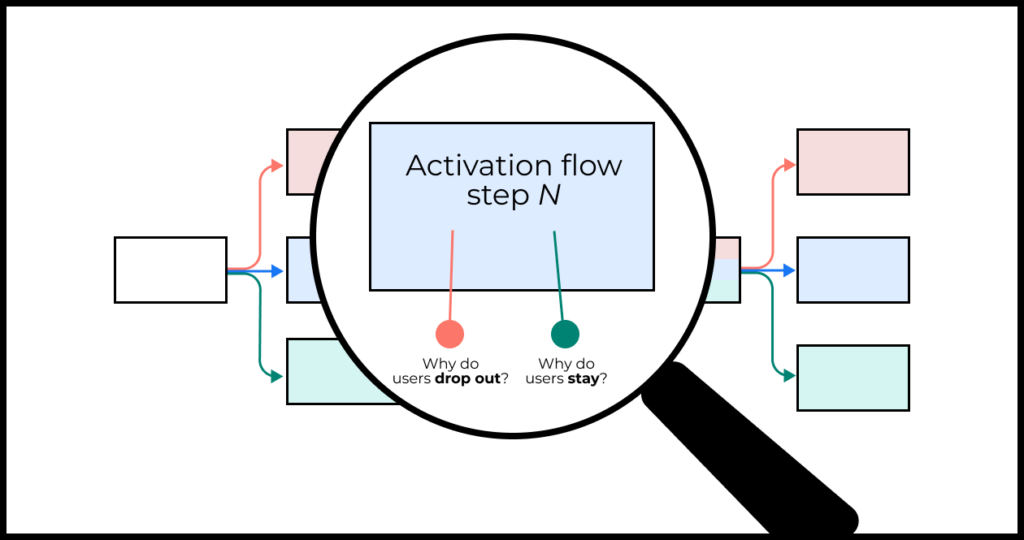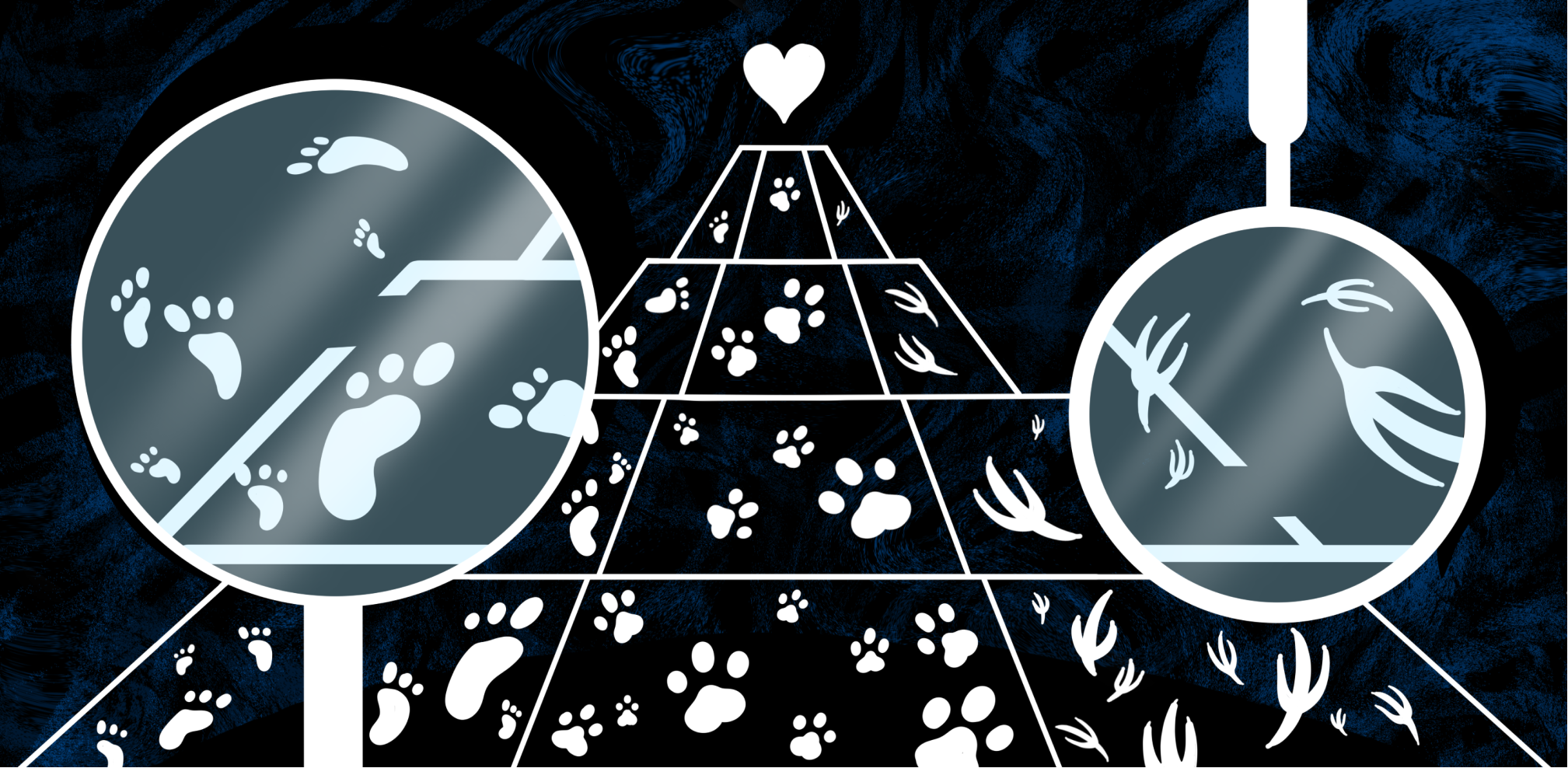When you want to optimize your product’s onboarding and activation, one of the best approaches is to systematically reduce friction and strengthen user motivation for every step on the path to value.
Here we will discuss how to apply this two-pronged approach to your own product.
→ Test your product management and data skills with this free Growth Skills Assessment Test.
→ Learn data-driven product management in Simulator by GoPractice.
→ Learn growth and realize the maximum potential of your product in Product Growth Simulator.
→ Learn to apply generative AI to create products and automate processes in Generative AI for Product Managers – Mini Simulator.
→ Learn AI/ML through practice by completing four projects around the most common AI problems in AI/ML Simulator for Product Managers.
All posts from the series
01. When user activation matters and you should focus on it.
02. User activation is one of the key levers for product growth.
03. The dos and don’ts of measuring activation.
04. How “aha moment” and the path to it change depending on the use case.
05. How to find “aha moment”: a qualitative plus quantitative approach.
06. How to determine the conditions necessary for the “aha moment”.
07. Time to value: an important lever for user activation growth.
08. How time to value and product complexity shape user activation.
09. Product-level building blocks for designing activation.
10. When and why to add people to the user activation process.
11. Session analysis: an important tool for designing activation.
12. CJM: from first encounter to the “aha moment”.
13. Designing activation in reverse: value first, acquisition channels last.
14. User activation starts long before sign-up.
15. Value windows: finding when users are ready to benefit from your product.
16. Why objective vs. perceived product value matters for activation.
17. Testing user activation fit for diverse use cases.
18. When to invest in optimizing user onboarding and activation.
19. Optimize user activation by reducing friction and strengthening motivation.
20. Reducing friction, strengthening user motivation: onboarding scenarios and solutions.
21. How to improve user activation by obtaining and leveraging additional user data.
In the previous article, we discussed when it makes sense to start optimizing your activation mechanisms. We also told how investing in optimization can boost growth and give your product a competitive advantage.
But many teams wrongly assume that “working on activation” means “focusing on optimizing what’s already there”. There are two main problems with this:
- Most of the improvements you come up with won’t be based on a deep understanding of use cases and the product’s added value. When you test the improvements experimentally, most of them will fail.
- The mechanism for onboarding and activation that you’ve already built intuitively often has structural limitations. You can’t work around these just by tinkering with small pieces of the overall flow.
The right way to improve activation starts with looking at product/market fit and added value, followed by building the optimal structure for articulating this value to users:
- Determine the use cases (the “jobs-to-be-done”) for which the product has product/market fit.
- Find where the product creates added value relative to the alternatives for each of those use cases. This added value is what we will be surfacing to new users.
- Identify the situations when people are ready to perceive that value and how exactly they appreciate and recognize this value. What is the trigger for changes in the user’s life? What are the changes necessary for the “aha moment” to happen? Where is the “aha moment” itself?
- Assess the complexity of the job-to-be-done, select the necessary structures for articulating value, and design the shortest possible paths to value for users with differing use cases.
- Merge the paths for diverse use cases into a single flow at the level of the product, notifications, people, and other processes.
Doing all of these things correctly will result in an effective activation mechanism with a structure that is expressly designed around the product/market fit of your product.
We then go deeper by optimizing with greater granularity. So far, we have been designing the activation flow as a whole. Now we proceed to looking at each individual step on the journey to value and doing two things:
- Determine the reasons why users drop out at this step.
- Identify the factors that motivate users to keep moving forward.

Why you can’t (and shouldn’t try to) eliminate activation friction entirely
It’s a misconception that there should be zero friction in the onboarding process.
Achieving zero friction might be possible, sometimes, if the product is so incredibly intuitive or universally used that the learning curve is flat. For this kind of product, you can just hand it to users and they will figure out the value without any help.
But for a product that’s new or complex, simply giving the product to users won’t work. They probably won’t see how to benefit from it, so they won’t receive enough value to continue using it.
If you simply put a complicated medication in physicians’ hands without any prior training or education, it won’t enable them to treat people. Physicians won’t be exactly against the medication, but neither will they reach value with it.
These situations require mechanisms for articulating value. People need to be taught how to obtain that value. Such mechanisms tend to create friction. So there shouldn’t be any more of these mechanisms than necessary for quickly getting the hang of the product.
That’s why we design activation by starting with the use case and product/market fit, as well as complexity of the job-to-be-done. We map the user’s optimal path to value based on them. At this point, our job is to refine this structure to make it logical, clear, and seamless.
Onboarding optimization by reducing friction and strengthening motivation
A while back, we discussed why reducing time to value is a critical tool for improving activation.
Previously we used this approach for designing the flow as a whole, by mapping the shortest path to product value.
This time we will be more surgical as we look at each individual step and optimize the user experience within that step.
This approach involves several actions:
- Prioritize steps based on where users drop out most often.
- For each step, determine the causes of dropout, as well as the factors motivating users to continue.
- Hypothesize solutions that minimize dropouts and/or strengthen user motivation.
- Prioritize the hypotheses and then use product experiments to measure their impact on key product metrics.
Let’s look at each of these actions more closely.
Step 1. Prioritize steps based on where users drop out most often
By this point you should have an updated CJM that outlines the shortest paths to value for your product’s users.
If you’ve managed to implement and put it into production, you can calculate actual conversions for each step. You can use funnel tools in Amplitude or Mixpanel, for example. Another way would be to calculate conversions manually with SQL.
→ Learn Amplitude with our Simulator for Data-Driven Product Management.
If your new activation flow isn’t yet live, you can add up dropouts for the prior version and use these numbers to estimate potential dropouts for the new flow.
The purpose of this step is to prioritize the areas to work on. Of course, ideally we should reduce friction and strengthen motivation for every activation step. But it’s more efficient to start by working on the areas of the path with the most dropouts.
There’s no point in throwing effort at optimizing a step with a dropout rate of 1% if there’s another step where we lose 15% of users.
Step 2. Determine the causes of dropout, as well as the factors motivating users to continue
So we’ve prioritized steps based on quantitative data (how many users drop out).
It’s tempting to now start generating hypotheses and ideas for improving the product. But charging ahead without knowing the deeper context of the causes of user dropout typically results in irrelevant solutions to non-existent problems.
For improving conversions in a smart way, we have to first understand why users drop out at various steps. This will require qualitative methods.
One common way to identify the causes of user behavior is very straightforward: talking with users. Personal interviews or surveys are good ways to do this.
When you try to analyze the early steps in your onboarding flow, you might have difficulties with recruiting users. Another problem is that they don’t always remember what exactly went wrong. If you aren’t able to find relevant users to ask, there are other methods available for researching user dropout.
UX testing is one alternative. Find target users and ask them to complete the product activation flow in your presence. As they do so, they should say what is going through their mind at any given moment. If you haven’t tried this before, definitely give it a try. This exercise can be rich in insights since it involves looking at the product from the fresh eyes of a new user (as opposed to yours—as an expert, it’s easy for you to take the product design for granted and stop noticing things).
For example, ZeptoLab often used PlaytestCloud when developing mobile games. This service enabled seeing the product through the eyes of potential users, alerting the team to numerous unexpected interpretations and thoughts by users discovering the product. For most products, you can use something of the likes of UserTesting.
Another way to investigate the causes of dropouts and motivation is to manually onboard new clients. With the help of your own people, in other words. This method is similar in essence to UX testing, but under more realistic conditions.
Besides identifying the causes of dropout (such as places that are complicated or unclear), don’t forget to also find what motivates users or otherwise gives them energy and confidence that the product can solve the user’s job-to-be-done.
When you solve the problems that cause dropouts, you reduce friction on the path to value. And when you succeed in better communicating the factors that motivate, users will be more likely to move forward and continue with your product.
Step 3. Hypothesize solutions that minimize dropouts and/or strengthen user motivation
These findings should inspire some ideas of your own on how to improve steps in the activation flow.
The best ideas will be inspired by an understanding of the product’s job-to-be-done, its added value, and the reasons driving users to drop out at particular steps.
Experience with similar problems in other products can be another important source of inspiration. This is a good reason to hold a team-wide brainstorm at this stage. A team with diverse experiences can yield new and unexpected perspectives on the problem.When making hypotheses, be sure to go beyond just the product level. Think about the other levels involved in user activation, such as notifications, people, external processes, and acquisition channels.
Step 4. Prioritize the hypotheses and then use product experiments to measure their impact on key product metrics
We won’t be exploring this step much in this article.
Most product teams are proficient at prioritization frameworks, such as RICE. These frameworks are useful for prioritizing the hypotheses generated during the previous steps.
By now (if you’ve prepared by researching use cases, product/market fit, added value, and user perception) the team should already have some intuition for the product domain. This intuition is invaluable for weeding out dead-end ideas early on.
Conclusion
Reducing time to value is a key lever for boosting product activation. But instead of applying this approach to the overall activation flow, here we are using it to optimize individual steps.
We perform this optimization by reducing friction and strengthening user motivation. This article has focused on applying the approach in practice. In our follow-up material, we will continue by exploring common situations and solutions for improving specific steps of the activation flow.






